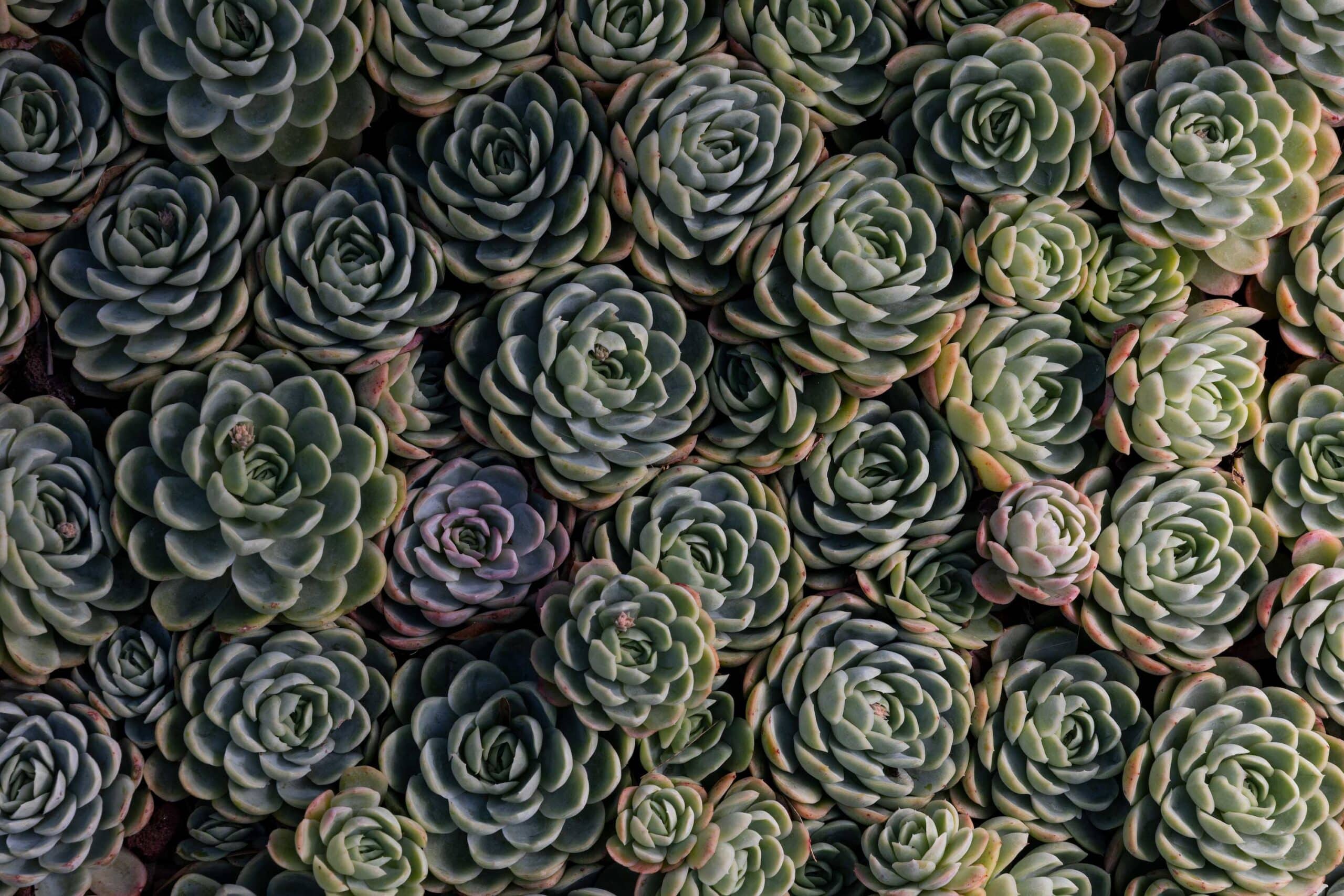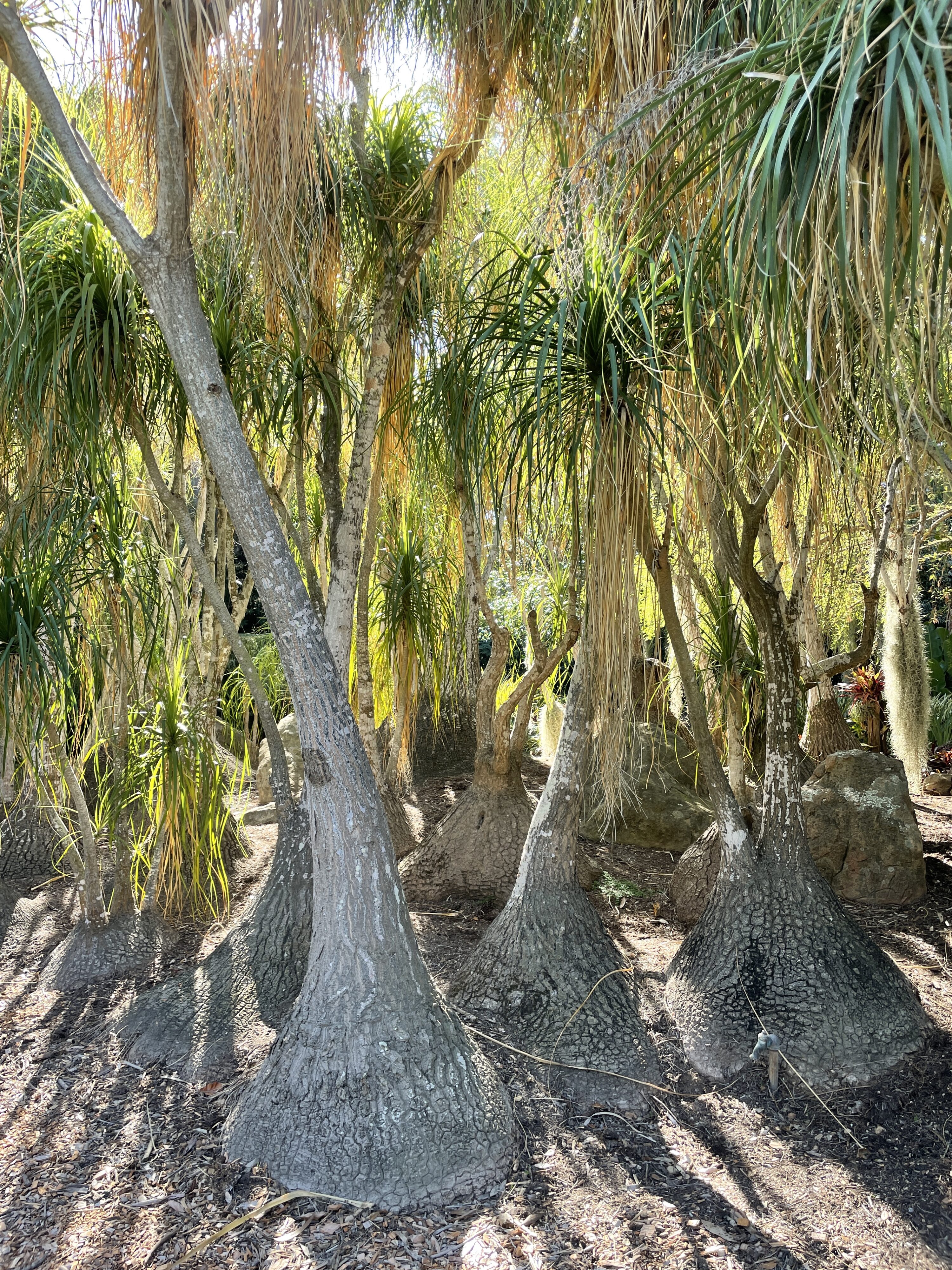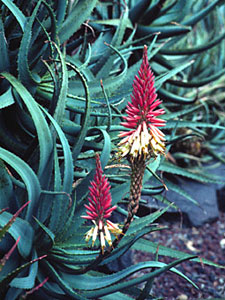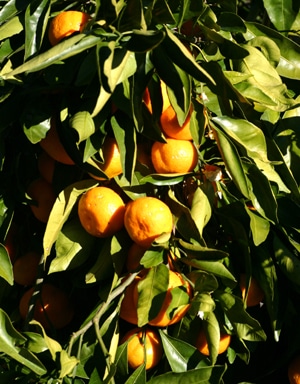
Plant Highlights
Plant Highlights
-
Beaucarnea recurvata
pony tail palm, bottle palm
Highlight Month:
January
Nativity:
Central to Southeastern Mexico
Growth Habit:
A single-trunked tree up to 15 feet tall, possibly even taller in very old specimens. Plants will branch more with age, and the trunk base can grow several feet across.
Growing Requirements:
Ponytail palms grow best in full sun with well-drained soil. They are very drought-tolerant and are often grown as houseplants in less temperate areas of the country. In Southern California we can grow this plant outdoors and see it reach much larger proportions.
Features:
Beaucarnea are not actually palms, but are succulents that have a swollen base (caudex) used for water storage. The long, narrow leaves droop down from tufts at the top of the plant. Plants are dioecious, with male and female flowers appearing on separate plants. Older plants will produce clusters of small white flowers that turn into papery seed capsules on female individuals.
Where at Lotusland:
B. recurvata can be found between the Bromeliad Garden and the Main Lawn, where over 75 mature plants grow tightly packed together in a grove.
-
Loropetalum chinense v. rubrum ‘Monraz’
Razzleberri® fringe flower
Highlight Month:
January
Nativity:
The straight species is native to China and Japan. Razzleberri® fringe flower is of cultivated origin.
Growth Habit:
An evergreen shrub growing to between 6 and 10 feet high and as wide. Young plants are often wider than they are tall.
Growing Requirements:
Plant in partial shade to full sun; more shade is required in areas with hot temperatures. Regular watering. Does best in well-drained, acidic to neutral soils.
Features:
This relative of witch hazel has layers of arching branches and small round olive-green leaves. The flowers are white to greenish with twisted fringe-like petals on the straight species. Razzleberri® fringe flower is one of several cultivars having bronze or burgundy colored foliage and bright pink flowers. Flowering is heaviest in late winter to early spring, but some flowers may appear all year long.
Where at Lotusland:
The hummingbird in the Topiary Garden.
-
Aloe mutabilis
small torch aloe
Highlight Month:
January
Nativity:
South Africa
Growth Habit:
Aloes are very drought tolerant and many, such as this one, provide color in the garden during their winter blooming season. It forms rosettes of green leaves at ground level that are about three feet across. It eventually forms clumps with smaller plants forming from the stem of the original. It blooms in winter with red tubular buds that open to pale yellow.
Growing Requirements:
Aloe mutabilis is very easy to grow. It requires full sun and good drainage. Water only to get plants established. It will survive short periods of frost.
Features:
Compared to Aloe arborescens, A. mutabilis is a smaller and bluer plant with more open branching. The flowers on A. arborescens do not change color and remain a reddish orange throughout their development.
Where at Lotusland:
Aloe Garden
-
Euphorbia ingens
tree euphorbia
Highlight Month:
January
Nativity:
Native to Southern Africa
Growth Habit:
This euphorbia is one of the largest of the genus. It grows to height of 30 feet or more as a many-branched tree.
Growing Requirements:
As a succulent member of the genus, the tree euphorbia is extremely tolerant of heat and drought. Plant it in loose soil with good drainage and allow plenty of room for its ultimate size.
Features:
The leafless stems are very dramatic and its fruits are often colorful. Be aware that it has a milky sap that is toxic and can cause skin dermatitis.
Where at Lotusland:
There are several large specimens along the Main Drive and specimens of a particularly interesting weeping form at the entrance to the Main House.
-
Archontophoenix cunninghamiana
king palm
Highlight Month:
January
Nativity:
Australia
Growth Habit:
This stately palm grows at a moderate rate to 60 feet in height. The feather-shaped leaves form a smooth crownshaft as their bases completely encircle the trunk at their base.
Growing Requirements:
Regular water and rich soil. King palms can tolerate freezing temperatures to 24° F.
Features:
King palms have slender trunks and a crown of gracefully arching leaves. Once mature, their pale ivory to violet inflorescences are striking in summer and the numerous bright red seeds that follow the flowers are highly decorative. They are “self-cleaning”, meaning that their fronds drop of their own accord when they are dead.
Where at Lotusland:
Planted in twos and threes along the Main Drive near the Japanese Garden.
-
Aloe flexilifolia
Highlight Month:
December
Nativity:
Aloe flexilifolia is from NE Tanzania where it grows exclusively in the Western Usambara Mountains on overhanging sheer rock faces and ledges. There is also a form that grows in flatter places with deeper soils.
Growth Habit:
This Aloe displays soft gray-green leaves that spiral outwards in graceful curves. It develops a sprawling, multi-stemmed habit with age and blooms in late fall/early winter with a profusion of loosely arranged red-orange flowers.
Growing Requirements:
Like most Aloe, this species prefers full sun and well-drained soils.
Features:
This species is critically endangered.
Where at Lotusland:
Aloe Garden
-
Citrus species and cultivars
orange, tangerine, lime, lemon, grapefruit
Highlight Month:
January
Nativity:
Garden Origin
Growth Habit:
Most Citrus are medium to small trees.
Growing Requirements:
Citrus trees require frost-free (or nearly so) climates, rich loamy soil and regular water. Full sun produces the most and tastiest fruit.
Features:
While usually quite handsome evergreen trees, citrus are grown almost exclusively for their fruit. The diversity of different types and selections within each type continues to expand. Lotusland’s Citrus Orchard is home to about 25 different cultivars.
Where at Lotusland:
On either side of the Lemon Arbor just south of the Insectary Garden.





